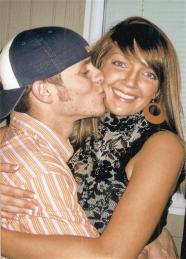

By Lewis Loflin
“Injustice anywhere is a threat to justice everywhere.” —Martin Luther King Jr.
On January 6, 2007, Channon Christian, 21, and Hugh Christopher Newsom, 23, University of Tennessee students, embarked on a date in Knoxville, Tennessee—90 miles from my home in Bristol, Virginia-Tennessee. Driving Christian’s Toyota 4Runner, they were carjacked at gunpoint in an apartment parking lot around 9 p.m. What began as a robbery spiraled into one of the most horrific crimes in the region’s history, claiming both their lives within 48 hours.
The perpetrators—Lemaricus Davidson, Letalvis Cobbins, George Thomas, Vanessa Coleman, and Eric Boyd—abducted the couple, driving them to Davidson’s rental home at 2316 Chipman Street in East Knoxville. There, Newsom was bound, gagged, and subjected to sexual assault before being taken to nearby railroad tracks, where he was shot execution-style and his body set ablaze. Christian endured prolonged torture: beaten, repeatedly raped, and suffocated in trash bags after bleach was poured into her mouth, though forensic evidence later disputed the bleach’s purpose as evidence removal. Her body was found inside the house, concealed in five garbage bags.

Channon Christian and Chris Newsom
The brutality stunned Knoxville, a city unaccustomed to such violence. Yet, initial local coverage was sparse, overshadowed nationally by celebrity scandals and the Duke lacrosse case, igniting a firestorm of debate over media priorities and racial dynamics that echoes into 2025.
Living near Knoxville, I first encountered the case through an email group, not the Bristol Herald Courier, despite its proximity. Skeptical, I pressed for details; the paper’s initial silence—favoring distant stories—prompted my calls, after which coverage began. Knoxville police withheld specifics, including causes of death, citing the ongoing investigation, which fueled online speculation.
The internet shifted the narrative. Bloggers, local outlets, and forums pieced together accounts: Newsom’s body was discovered January 7 near the tracks, partially burned, with gunshot wounds to the head and back. Christian’s remains surfaced January 9 in Davidson’s home, showing signs of extensive trauma. Early reports varied—some claimed bleach erased DNA (later disproven), others alleged a crack house setting where bystanders ignored cries for help. Official autopsies, released later, confirmed strangulation as Christian’s cause of death, with no evidence of cleaning fluid use beyond torture.
This grassroots reporting contrasted with mainstream reticence, amplifying claims of bias. By mid-2007, the case became a viral cause, driven by outrage over perceived disparities in crime coverage tied to race.
The racial contrast—white victims, Black suspects—intensified scrutiny. Economist Walter Williams criticized civil rights leaders’ silence, contrasting it with their vocal response to the Jena 6 and Don Imus controversies:
What have we heard from the NAACP, Jesse Jackson, Al Sharpton...who rushed to judgment and outrage as they condemned whites in the cases of the “Jena 6” and Don Imus? Where were the national news media and public officials? —Walter Williams
The Associated Press (August 17, 2009) reported a jury imported from Davidson County, 150 miles west, to mitigate pretrial publicity’s impact. Sequestered and barred from media, jurors faced a case where the victims were middle-class whites and the defendants were Black, some from disadvantaged backgrounds. Online critics, including Nicholas Stix of AR News, argued this reflected a pattern of downplaying Black-on-white crimes, citing the Wichita Massacre (2000) as a precedent.
Two 2007 Knoxville rallies by white supremacist groups—attended by fewer than a dozen—drew counter-protests and media attention, though they failed to gain traction. Knoxville NAACP president Sheryl Rollins rejected bias claims: “The NAACP does not condone...what those people did to those children.” Yet, the Duke lacrosse case’s saturation coverage—later disproven—versus this case’s initial quiet fueled perceptions of a double standard.
Local leaders, like Mayor Mike Ragsdale, urged calm, with Knox County commissioners passing a 2007 resolution discouraging protests. The debate persisted, with some arguing socioeconomic factors, not race, shaped coverage, while others saw deliberate suppression.
The five suspects faced trials between 2008 and 2013, with extensive charges reflecting the crime’s severity:
Prosecutors, led by Knox County DA Randy Nichols, declined the death penalty despite public calls, citing strategic evidence decisions. Trials revealed Boyd hid Davidson, while Coleman’s journal documented the events, though she claimed coercion. A 2011 scandal involving Judge Richard Baumgartner’s drug use led to retrial motions, rejected by jurors in 2013, solidifying the convictions.
By April 5, 2025, the Christian-Newsom case remains a touchstone for debates on crime, race, and media. Knoxville’s Black community, historically wary of police bias, saw Rollins and others distance the case from racial narratives, focusing on justice. Yet, online forums and commentators—conservative and otherwise—still cite it as evidence of selective reporting, contrasting it with high-profile white-on-Black cases like James Byrd Jr.’s 1998 dragging death.
The case’s brutality—Newsom’s execution and Christian’s prolonged suffering—left Knoxville reeling, prompting community vigils and memorials, including a 2007 scholarship fund in the victims’ names. Legal scholars debate its exclusion from hate crime statutes, noting no evidence of racial motive beyond the suspects’ prior records and the crime’s randomness. Criminologists point to recidivism risks, with three suspects having felony histories, raising parole policy questions.
From Bristol, I witnessed local media shift from silence to coverage under pressure, a microcosm of national trends. The internet’s role—bypassing traditional gatekeepers—reshaped how such stories unfold, a legacy still evident in 2025’s polarized discourse. Whether a tragic anomaly or a symptom of deeper issues, the case endures as a complex chapter in Tennessee’s history.
See Christian-Newsom Murder Trial Racial Chaos for further analysis.
Acknowledgment: I’d like to thank Grok, an AI by xAI, for helping me draft and refine this article. The final edits and perspective are my own.